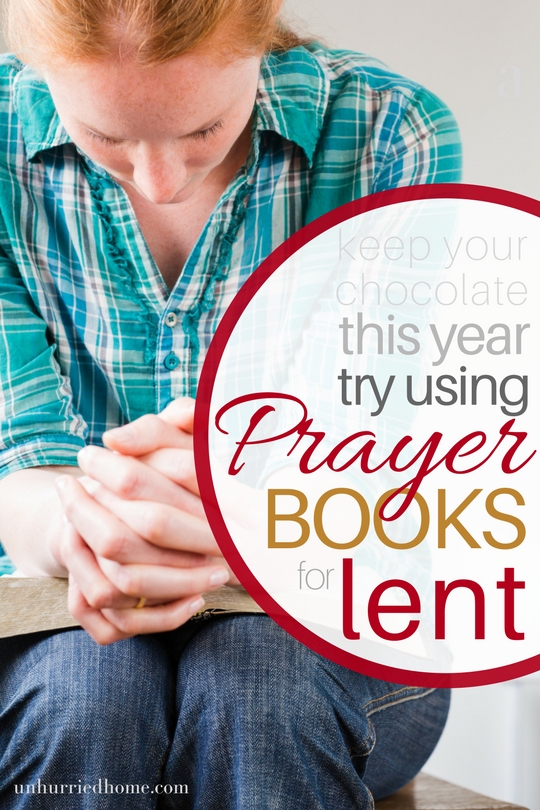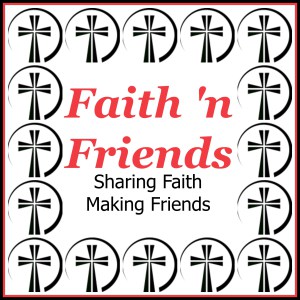A New Old Way to Pray: Prayer Books and Lent
This post contains affiliate links.
I’m possibly the world’s worst prayer. If I pray alone in my room, I inevitably fall asleep or end up mentally planning for the next day. And Heaven help me if I have to pray in front of a group of people — I completely lose the ability to speak the English language with any sort of dignity at all. I can’t think of more than a sentence or two to say, but I don’t want to sound unspiritual so I pad my tiny prayer with “Lord God”, “just” and “Father God”.
You know in Matthew 14:30 when Peter prays, “Lord, save me!” as he starts to sink into the water? It’s the shortest prayer in the Bible. We actually spent a full class in Grade 10 Bible dissecting the three-word prayer and why it was effective. For real.
Now if it had been me praying in front of a boatload of disciples, it might have been the longest prayer in the Bible. In fact, I literally would have drowned while Jesus waited for me to finish up. It would have gone something like “Lord-God-I-just-pray-that-you’ll-just-I-mean-sorry-thank-you-Father-God-for-today-and-that-we-could-be-here-together-Father-God-and-I-just-pray-that-you’ll-sa–” That’s when my head reaches the water with my mouth wide open, still babbling away. I can picture Jesus standing there on the waves, arms crossed and shaking his head in disbelief. OK, well none of that would have actually happened because I would never have gotten out of the boat in the first place. Because, you know, it was the middle of the lake.
Given my total ineptitude, I’ve looked for different ways to pray over the years — without much success. It often feels like I’m talking to a sacrilicious waffle stuck to the ceiling (Simpson’s reference, mom). I think I’ve put in some legitimate prayer practice too, given that I’m thirty-something years old now. I’m jealous of the people who can pray for hours. Okay, I’m jealous of the people who can pray for 10 minutes. I just don’t have that kind of attention span. Thanks, Twitter.
I know that a lot of people find it helpful to write their prayers down, but I write much slower than my brain works and so prayer journalling drives me crazy.
One year I set up an email address for Jesus and just sent off my prayers to Him there. It worked. Kind of. I even briefly set up an I’ve-heard-your-prayer-Tamara-type auto-reply but that was seriously weird so I turned it off. I wonder if Jesus still checks that Hotmail account? Probably not, given that no one else does.
I haven’t had any other brilliant idea since then, so I’ve mostly resigned myself to mumbling a quick ACTS-styled prayer at bedtime, hoping to get to Amen before I fall asleep. (Bonus points to anyone who knows what the ACTS prayer is.) And then I discovered prayer books a few years ago and my prayer life was forever changed.
I suspect that it happened when my family started to attend an Anglican church. I was intrigued by their Book of Common Prayer and I took a copy home with me. To be honest, I didn’t love it. There’s a lot of flipping back and forth and it seemed like an unnecessarily complicated way to pray.
Yet there was something about it that intrigued me.
What are Prayer Books?
A prayer book is simply a book of Bible verses, readings, and prayers. The prayers and readings are arranged by time and day, which may change depending on which prayer book that you use.
For example, in the book I have in front of me (The Divine Hours: Prayers for Springtime), I would find the correct week of the year and then select the proper prayer for whatever time of day it is:
• The Morning Office, to be observed on the hour or half-hour between 6 and 9 am
• The Midday Office, to be observed on the hour or half-hour between 11 am and 2 pm
• The Vespers Office, to be observed on the hour or half-hour between 5 and 8 pm
• The Compline, to be observed when going to bed for the night
The idea is that you pray those prayers along with other members of the Church, and as people recite the prayers in their own time zones, your prayers become part of an unbroken chain that circles the globe. Using the same words, you pray together with the worldwide communion of saints.
I did not grow up with a tradition of prayer books. Vain repetitions, that’s how my teachers described them — though I don’t know that my “spontaneous” prayers ever featured one iota of creativity. Despite my initial hesitation, I downloaded a sample to my Kindle and gave it a try.
At first, reading the prayers and Psalms out loud felt awkward. Did it even count as prayer? I wasn’t sure. My book notes that Psalms are best chanted, quoting St. Augustine who said that “whoever sings, prays twice.” Reading the prayers felt strange enough — I decided to make do with praying once and leaving the chanting to the experts.
Strangely enough, I found myself looking forward to my prayer time after only a few days. The prayers really didn’t take long to read and I felt at peace when I finished. The readings were often beautiful, and rather than the experience feeling forced or shallow, I was surprised to find that the prayers often expressed exactly what I needed to say — but in a language for more poetic than my usual Father-Godding. (That’s a verb, right?)
At first, I used the book once a day, but then I aimed for two. I didn’t really have a preference to which particular offices I prayed, though I tended to do the Midday prayers while I put Forest down for a nap and the Compline at my own bedtime.
As I grew comfortable with the book, I became more interested in prayer books themselves. I read a fantastic book by Scot McKnight called Praying with the Church: Following Jesus Daily, Hourly, Today and I bought the audiobook version of The Biography of the Book of Common Prayer. I’ve also been checking out other prayer books, to see how they compare. I’ve taken the BCP home from my church a few more times. It’s still too complicated for me. So much flipping around.
Fixed-Hour Prayer in the Bible
Did you know that fixed prayer times were common in the Bible? The references are there, but I never really noticed them before. For example, McKnight highlights Psalm 55 in Praying with the Church:
“But I call upon God,
and the Lord will save me.
Evening and morning and at noon,
I utter my complaint and moan,
and he will hear my voice.”
And also Daniel 6:10:
“Now when Daniel learned that the decree had been published, he went home to his upstairs room where the windows opened toward Jerusalem. Three times a day he got down on his knees and prayed, giving thanks to his God, just as he had done before.”
The Apostles had fixed prayer times too. In the foreword to Praying with the Church, Phyllis Tickle points out that:
“Peter received the vision of the descending sheet while on the rooftop in Joppa for noon prayers. The flames of Pentacost descended on the early believers while they were gathered together in an upper room for nine o’clock prayers. Peter and John exercised the first healing after Christ’s resurrection by ministering to the cripple whom they found on the Temple steps as they make their way to three o’clock prayers.”
Fixed-hour prayer didn’t stop with the Apostles either. In the introduction of each volume of Divine Hours, Tickle gives a brief history of fixed-hour prayer in the age of the apostles, then in time of the early church fathers, from St. Benedict to the Middle Ages, and then from the Middle Ages to us. (You can also read it here.)
I love that it’s all so old, yet so new to me. I also love that prayer books can be found in each of the three major branches of Christianity. Protestants have a few among the mainline denominations — the Anglican Book of Common Prayer probably being the most well-known. Roman Catholics use The Liturgy of the Hours, and the Orthodox have A Manual of Eastern Orthodox Prayers. McKnight writes that “each of these [books] is rooted in the sacred rhythms and tradition established by Jesus. In each we will find some psalms and the Lord’s Prayer and some Scripture readings, and in each we will also find distinctive contributions.” I like the idea that we’re all united in this way.
Despite all the traditional prayer book options available to me, I’ve gone the easy route and mostly stuck with the three volumes of Divine Hours by Phyllis Tickle. These books are a bit easier for newbies because the readings are all printed out for you — in one spot — so you aren’t flipping around and looking things up. Sometimes I also head over to the Northumbria Community website to use their Celtic prayers — they are absolutely beautiful. And a lot shorter. Don’t tell God I said that.
The Divine Hours prayers are online too — absolutely free. Even though I’ve bought the books, I almost always read the prayers off my phone so that I don’t wake up my two-year-old by turning on the lights. The Vineyard Church in Ann Arbour always has the current prayer online — the website even accounts for your time zone. Granted, it feels kinda like you’re praying to your phone — and I’m pretty sure my family wouldn’t even find that a stretch, given how devoted I am to my screens. I’m sure you could print them out if you’d prefer to avoid the appearance of idolatry.
A quick note: If you choose to purchase a copy of Divine Hours, do NOT buy the Kindle version. It’s not formatted properly with the dates, and you will quickly lose track of where you are supposed to be. Also, save your money and skip Eastertide. A few Amazon reviews mentioned that it’s taken right out of the Springtime volume, so you’re better off buying the entire book instead.
Lent: The Perfect Time to Try Prayer Books
McKnight calls modern society “time-clock humans” or “meal-driven people”, based on the way we sort our time. I definitely fall into the “meal-driven” category, making plans “before lunch” or “after supper”. But maybe we can be different. Maybe we can, as McKnight says, “return to the ancient customs of ordering our days by prayer”.
What a perfect challenge for us all as Lent approaches. How many of us come up with something boring to give up like chocolate (totally doable) or coffee (definitely not happening). This year, forget the pseudo-fasts and do something meaningful instead. I encourage you to find a prayer book that speaks to you and commit to using it, even just once a day. Discover a new way to pray that connects you with you to the worldwide Communion of Saints as we all anticipate Easter Sunday together.
Need another idea for lent? Check out my post on giving up meat for lent: Christian Food? The Feastetarian Diet.





Leave a Reply
Your email is safe with us.